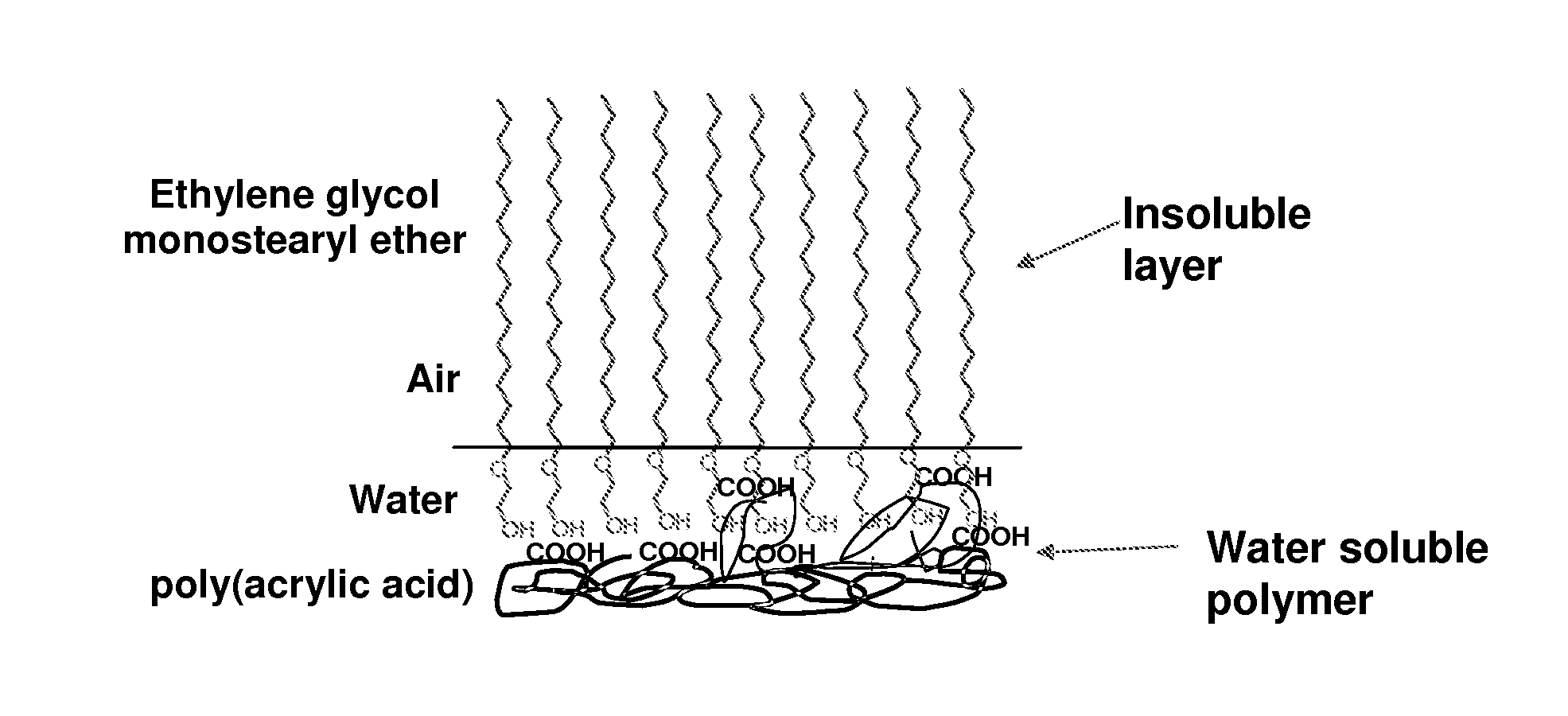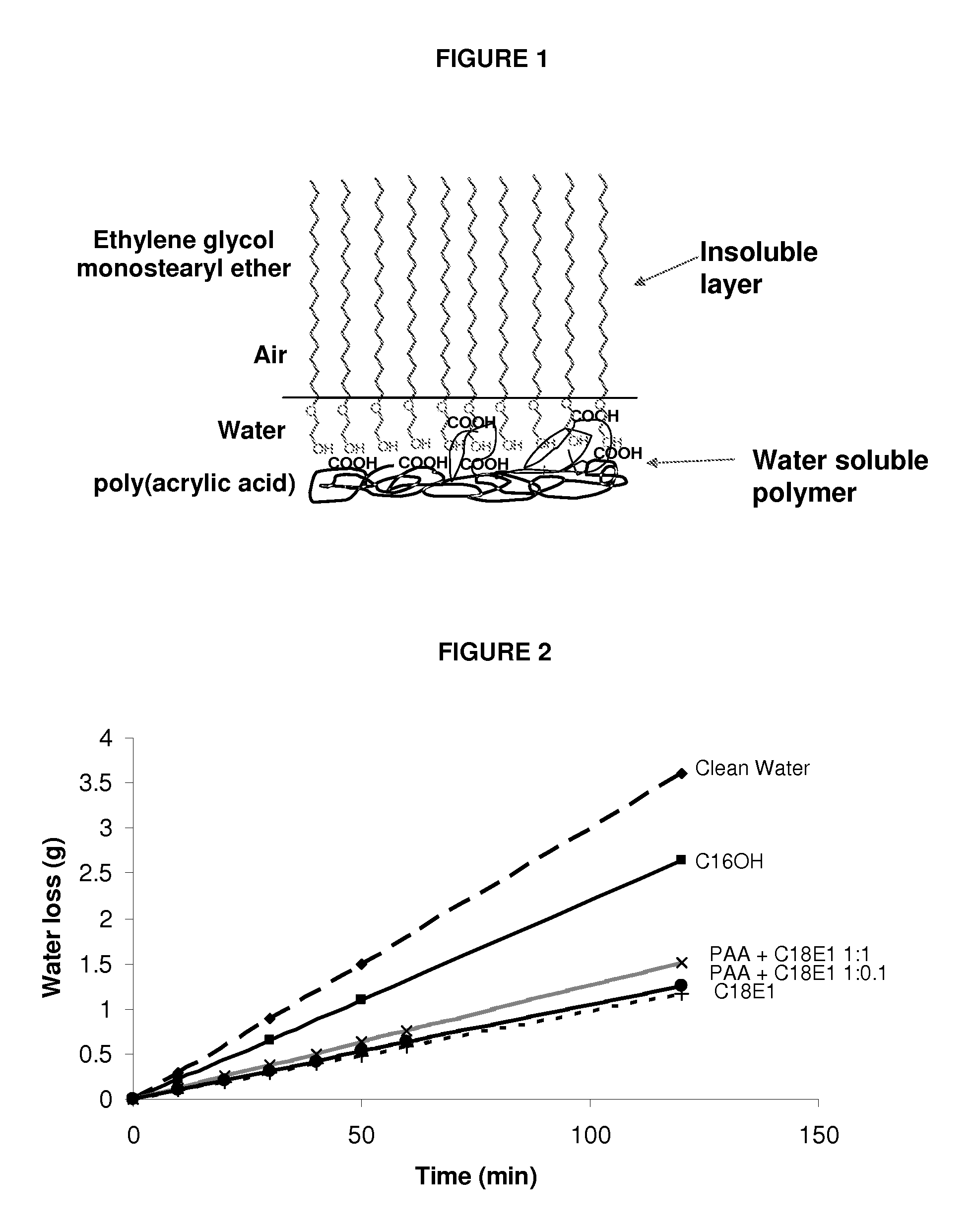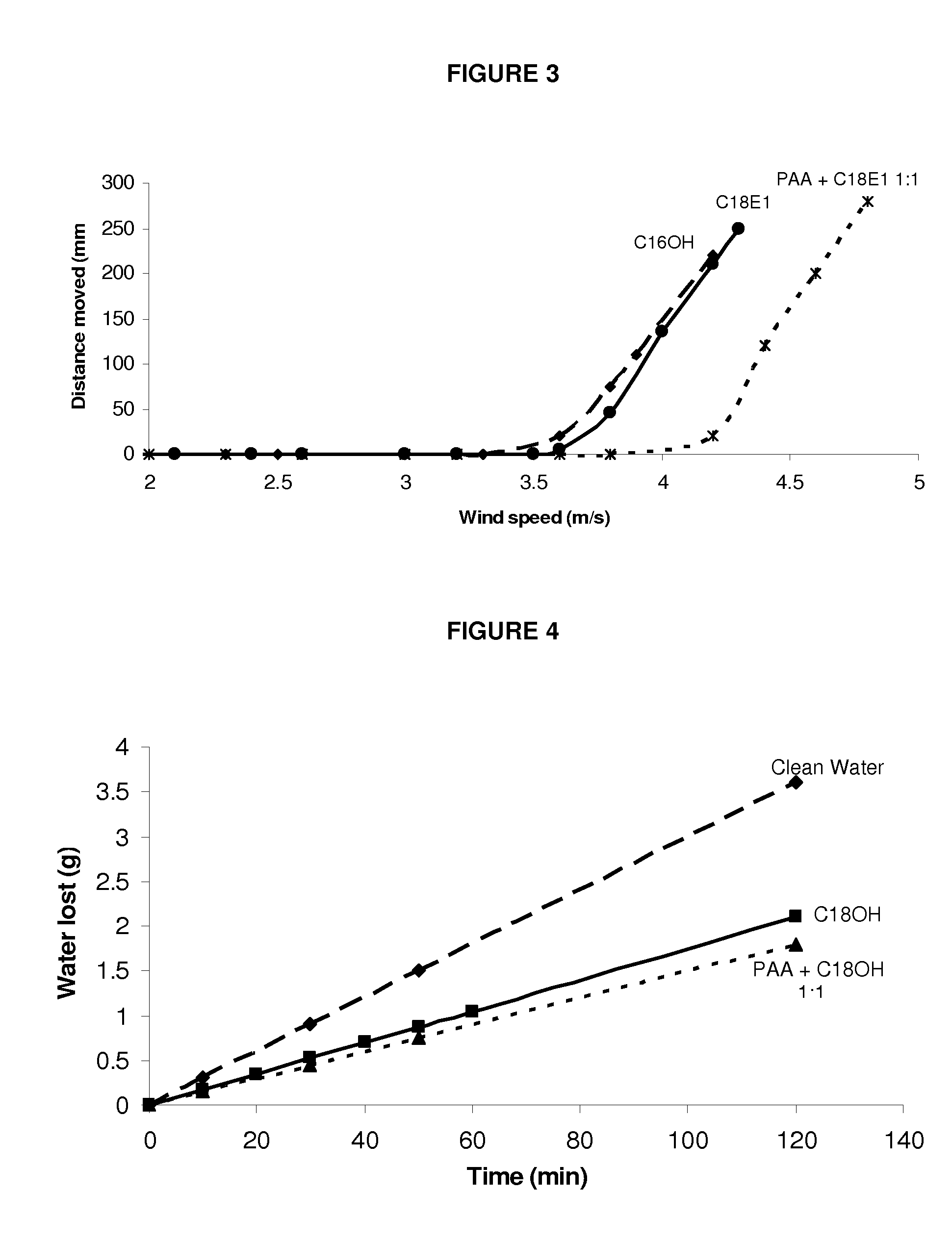Method for controlling water evaporation
a technology of water evaporation and control method, which is applied in water/sewage treatment, water/sludge/sewage treatment, chemical/physical/physicochemical processes, etc., can solve the problems of limiting the ability to provide, significant loss of critical water resources, and lack of water
- Summary
- Abstract
- Description
- Claims
- Application Information
AI Technical Summary
Benefits of technology
Problems solved by technology
Method used
Image
Examples
example 1
System with poly(acrylic acid) and ethylene glycol monostearyl ether
Monolayer Properties
[0476]A 700 cm2 Langmuir trough (Nima) was filled with ultrapure water (18.2 MΩMillipore) and allowed to equilibrate to a temperature of 25±1° C.
[0477]A composition containing poly(acrylic acid) and ethylene glycol monostearyl ether was prepared by firstly making up a 1 mg / ml solution of poly(acrylic acid) (PAA, MW=4×106 g / mol) in water and a 1 mg / ml solution of ethylene glycol monostearyl ether (C18E1) in ethanol, then combining desired quantities of the two solutions to form a single composition solution having a desired molar ratio of PAA:C18E1. In this matter, compositions containing a molar ratio of PAA:C18E1 of 1:0.1 and 1:1 were prepared.
[0478]Comparative compositions containing either cetyl alcohol (C16OH) or ethylene glycol monostearyl ether (C18E1) on their own in chloroform at a concentration of 1 mg / ml were also prepared. Cetyl alcohol (C16OH) and ethylene glycol monostearyl ether (C1...
example 2
System with Poly(Acrylic Acid) and Stearyl Alcohol
Monolayer Properties
[0486]A 700 cm2 Langmuir trough (Nima) was filled with ultrapure water (18.2 MΩMillipore) and allowed to equilibrate to a temperature of 25±1° C.
[0487]A composition containing poly(acrylic acid) and stearyl alcohol was prepared by firstly making up a 1 mg / ml solution of poly(acrylic acid) (PAA, MW=4×106 g / mol) in water and a 1 mg / ml solution of stearyl alcohol (C18OH) in ethanol, then combining desired quantities of the two solutions to form a single composition solution having a desired molar ratio of PAA:C18OH of 1:1.
[0488]A comparative composition containing stearyl alcohol (C18OH) on its own in chloroform at a concentration of 1 mg / ml was also prepared.
[0489]For each set of measurements the solution was deposited onto the water surface via a microsyringe. Water without any surface film was used as a control.
Evaporation Resistance
[0490]The evaporation resistance of systems prepared with a composition containing...
example 3
System with Poly(acrylamide-co-acrylic Acid) and Ethylene Glycol Monostearyl Ether
[0494]A composition containing poly(acrylamide-co-acrylic acid) and ethylene glycol monostearyl ether (C18E1) was prepared by firstly making up a 1 mg / ml solution of poly(acrylamide-co-acrylic acid) (P(AAm-co-AA)), MW=5,000,000, 1.5 wt % acrylic acid) in water and a 1 mg / ml solution of ethylene glycol monostearyl ether (C18E1) in ethanol, then combining desired quantities of the two solutions to form a single composition solution having a desired molar ratio of P(AAm-co-AA) functional groups:C18E1 of 1:1.
[0495]A comparative composition containing ethylene glycol monostearyl ether (C18E1) on its own in ethanol at a concentration of 1 mg / ml was also prepared.
[0496]For each set of measurements the solution was deposited onto the water surface via a microsyringe.
Wind Resistance
[0497]The wind resistance of a system containing P(AAm-co-AA) and C18E1 (1:1 molar ratio) and a comparative layer formed with C18E1...
PUM
 Login to View More
Login to View More Abstract
Description
Claims
Application Information
 Login to View More
Login to View More - R&D
- Intellectual Property
- Life Sciences
- Materials
- Tech Scout
- Unparalleled Data Quality
- Higher Quality Content
- 60% Fewer Hallucinations
Browse by: Latest US Patents, China's latest patents, Technical Efficacy Thesaurus, Application Domain, Technology Topic, Popular Technical Reports.
© 2025 PatSnap. All rights reserved.Legal|Privacy policy|Modern Slavery Act Transparency Statement|Sitemap|About US| Contact US: help@patsnap.com



